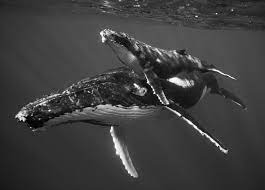Ursula K. Le Guin,: Antspeak and Rocktalk
02. I CONTAIN MULTITUDES
If we surrendered to earth’s intelligence, we could rise up rooted, like trees.
—Rainer Rilke
Charles Darwin labelled social insects like bees and termites ‘inconvenient animals.’ Their sociability, or rather ‘sisterhood’, didn’t fit any existing categorisation. For ages philosophers, and entomologists alike, have pondered how the individual relates to the collective. What is one termite? Is it the individual ant, or its colony? Some termites have been gardeners for millions of years. Their DNA has become so entangled with the fungal zoo they cultivate in their gardens, that we can’t say where one species ends and the other begins. And what about the protists, the microbiological symbiont consisting of a gazillion smaller life forms that live in the termite’s gut? Is not every termite a colony in itself? The environmental implications are so relevant that it lead to a new branch in microbiology: metagenomics—the genomics of communities.
When Orson Welles said, ‘We’re born alone, we live alone, we die alone’, he was mistaken. Even when we are alone, we are never alone, insists Ed Yong. We exist in symbiosis – entangled as different organisms living together. Some animals are colonised by microbes while they are still unfertilised eggs; others pick up their first partners at the moment of birth and then proceed through their lives in their presence. When we eat, so do they. When we travel, they come along. When we die, they consume us. Every one of us is a zoo in our own right – a colony enclosed within a single body. A multi-species collective. An entire world. (Ed Yong: I Contain Multitudes, 2016: 1)
Biology and politics are not-so-strange bedfellows. When looking at those looking at termites, science takes the shape of storytelling. South-African writer Eugène Marais was able to prove the socialist nature of termite colonies; Flemish writer Maurice Maeterlinck plagiarised Marais to come to the opposite conclusion; Aldous Huxley’s brother’s termite research inspired Brave New World’s dystopian worldview; symbiont termites led Lynn Margulis to evolutionary cooperation and the notion of the intimacy of strangers. Wrought by the mimetic powers of the storyteller, termite communities have been harnessed, again and again, into ideological renderings. It isn’t what we look at, but who looks and why.
To understand termites, Marais wrote, we need to learn a new alphabet. The alphabet of togetherness. Physicist Richard Feynman once remarked, ‘the imagination of nature is far greater than the imagination of humans.’ Contained by the banality of our imagination, the limits of our senses, and perhaps blinded by scientific certitudes, is it possible that our tools are inadequate to describe termite societies? When Lynn Margulis started asking different questions, different answers began to emerge. She came to understand the earth’s history as one of ‘becoming-with’ each other: species co-evolve through the ‘intimacy of strangers.’ A protagonist in her work is the Mixotricha Paradoxa, a microorganism that lives inside the hindgut of a South-Australian termite. M.Paradoxa only exists in symbiosis with numerous smaller life forms, fellow travellers that co-evolved, fusing their genomes for over a 100-million years. It is an extreme example of how all species, ourselves included, have evolved to contain multitudes. Or, as Donna Haraway suggests: we are all taking part in a ‘greater conversation’ of ‘multispecies storytelling’. In her book Staying with the Trouble, Making Kin in the Chthulucene, Donna Haraway suggests that “worlding with many species requires ‘making oddkin’ in unexpected collaborations and combinations, in hot compost piles.” We live in landscapes of myriad relationships, myriad webs of intersubjectivities. We all are multitudes within multitudes.
FURTHER READING & RESEARCH
Michael Pollan, The Botany of Desire: A Plant’s-Eye View of the World (2001)
Peter Wohleben, The Hidden Life of Trees (2015)
Peter Tompkins & Christopher Bird, The Secret Life of Plants (1989)
Ed Yong, I Contain Multitudes, The Microbes Within Us and a Grander View of Life (2016)
Anna Lowenhaupt Tsing, The Mushroom at the End of the World, On the Possibility of Life in the Captialist Ruins. (2015)
Lynn Margulis, Symbiotic Planet: A New Look At Evolution (1999)
Lynn Margulis, Symbiotic Earth (2018)
Lynn Margulis on her life, Symbiogenesis, Gaia Theory, Scienctific Practice and Effects of Money (2011)
Eben Kirksey, Ed., The Multispecies Salon (2014)
Thom van Dooren, Flight Ways: Life and Loss at the Edge of Extinction (2016)
Donna Haraway, When species meet (2008)
Thom van Dooren, Ursula Münster, Eben Kirksey, Deborah Bird Rose, Matthew Chrulew, Anna Lowenhaupt Tsing, Multispecies Studies: Cultivating Arts of Attentiveness, in: Environmental Humanities (2016)
Thom van Dooren, The Wake of Crows: Living and Dying in Shared Worlds (2019)
Michael Pollan, The Botany of Desire: A Plant’s Eye View of the World (2001)
Frans de Waal, Are We Smart Enough to Know How Smart Animals Are? (2013)
Frans de Waal,The Bonobo and the Atheist (2016)
Frans de Waal,The Age of Empathy: Nature’s Lessons for a Kinder Society, (2009)
Raymond Corbey & Annette Lanjouw, eds. The Politics of Species: Reshaping our Relationships with Other Animals (2013)
Eduardo Kohn, How Forest Think, Toward an Anthropology beyond the Human (University of California, Berkeley 2013)
Eduardo Kohn, Thinking with a Forest’s Thoughts (2013)
Katy Payne, Singing Whales, Deep-Rumbling Elephants: What Their Sounds Reveal about their Minds
Katy Payne, Elephant Listening Project
Rebecca Solnit, Falling Together (2017)
Michael Hardt & Antonio Negri, Commonwealth (2009) + Multitude (2004)
Ivan Illich, Silence is a Commons(1983)
Jay Walljasper, All That We Share (2010)
David Bollier & Silke Helfrich, ed.: Patterns of Commoning (2015)
Donald Macon Nonini, The Global Idea of ‘the Commons’ (2007)
Tomales Bay Institute, State of the Commons
